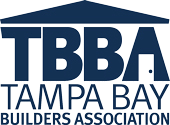
October 20, 2025
The number of minority-owned residential builders continues to rise nationally and in Tampa Bay according to the National Association of Home Builders, but a new report also noted that challenges remain in creating greater inclusion for this sector.
Drawing on data from the U.S. Census Bureau’s Annual Business Survey (ABS) from the U.S. Census Bureau, the NAHB reported that 14% of new residential building firms were minority-owned in 2022. The Census classifies firms as minority-owned if the owner with majority share (i.e., 51% or more of stock or equity in the business) identifies as “any race and ethnicity combination other than non-Hispanic and White.”
From 2017 to 2022, the number of minority-owned new residential builder firms jumped 64%, from 4,938 to 9,965. When NAHB began tracking this data 15 years ago, only 6% of residential builders were minority owned.
Locally, the Greater Tampa Bay Chamber recently posted a blog that noted minority-owned firms make up a significant 16.2% of the area’s construction sector.
Another positive sign? The Tampa Bay Business Journal ranked four minority-owned construction firms on its top 30 minority-owned businesses in Tampa Bay list. Published in April, the Journal placed Construction Services, Inc. ($70 million in 2024 revenue), eighth on its list of minority-owned businesses, while Diaz Fritz Group ($40.92 million in 2024 revenue) slotted at 11, One Day Came Inc. ($13.77 million) at 17 and NuJak Companies ($12.42 million) at 18.
Why does it matter? Jared Parker, owner of the Regional Economic Consulting Group, recently wrote in the Greater Tampa Bay Chamber of Commerce blog that the ongoing growth of minority-owned businesses will be essential to the region's future prosperity.
“Minority-owned businesses are important partners in the economic development of the Greater Tampa Area,” Parker wrote. “They provide jobs and generate considerable economic activity that benefits the entire community.”
Parker also noted that programs helping these businesses scale up, access capital, and diversify their industries could help the overall region thrive.
There are also specific advantages to amplifying inclusion in the residential home building and construction industry. Under the Hard Hat, a construction digital media site, stated in a recent blog post that a more diverse construction industry leads to stronger businesses, better innovation, and a more inclusive workforce.
Despite the improving numbers, minority-owned businesses still face challenges. NAHB’s Eric Lynch recently wrote that “compared to the overall U.S. population, minority-owned firms continue to be underrepresented within both (the residential and remodeling) housing sectors.”
Under the Hard Hat cited limited funding, restricted networking opportunities, and systemic barriers, but noted that greater inclusion could be the key to overcoming labor shortages in the construction industry.
